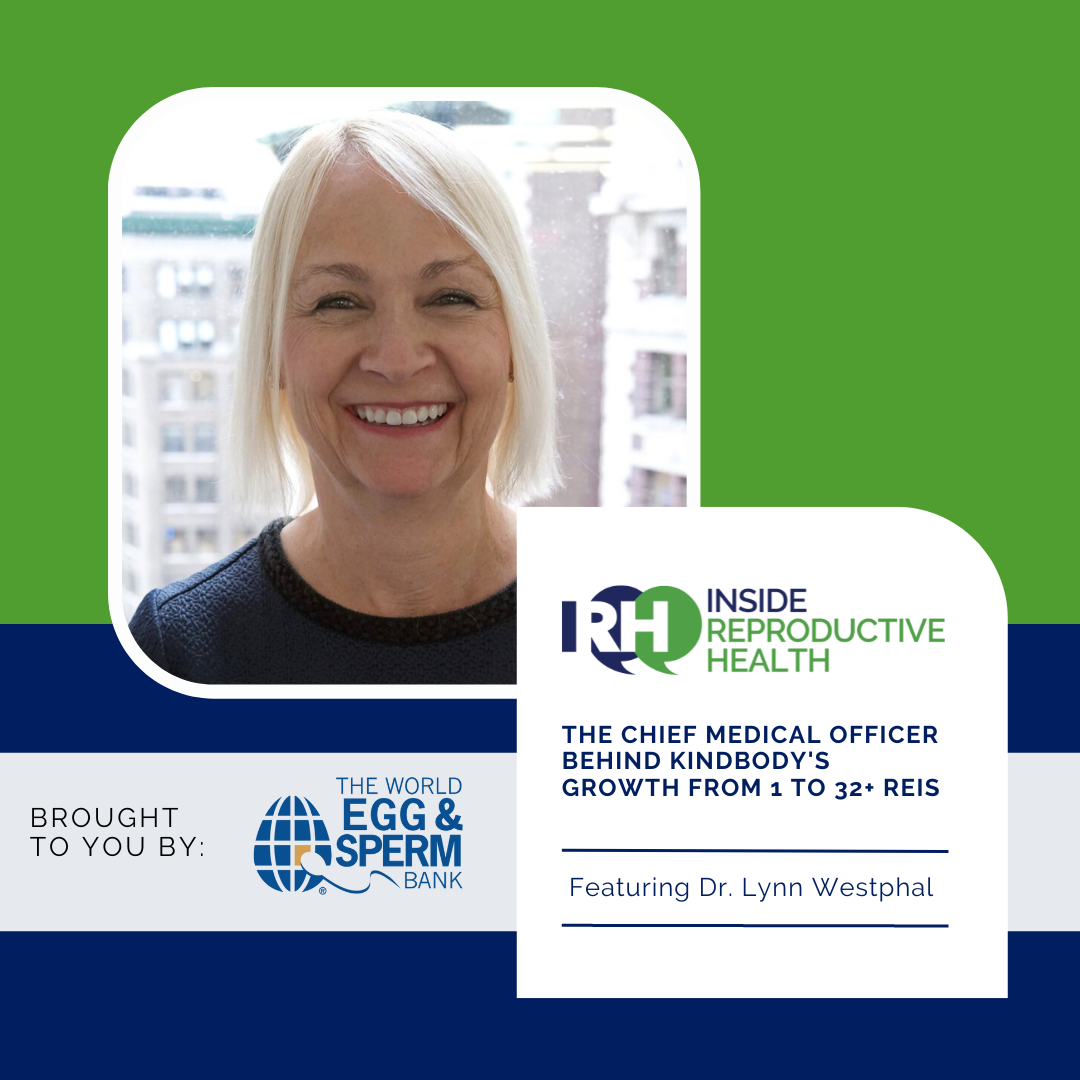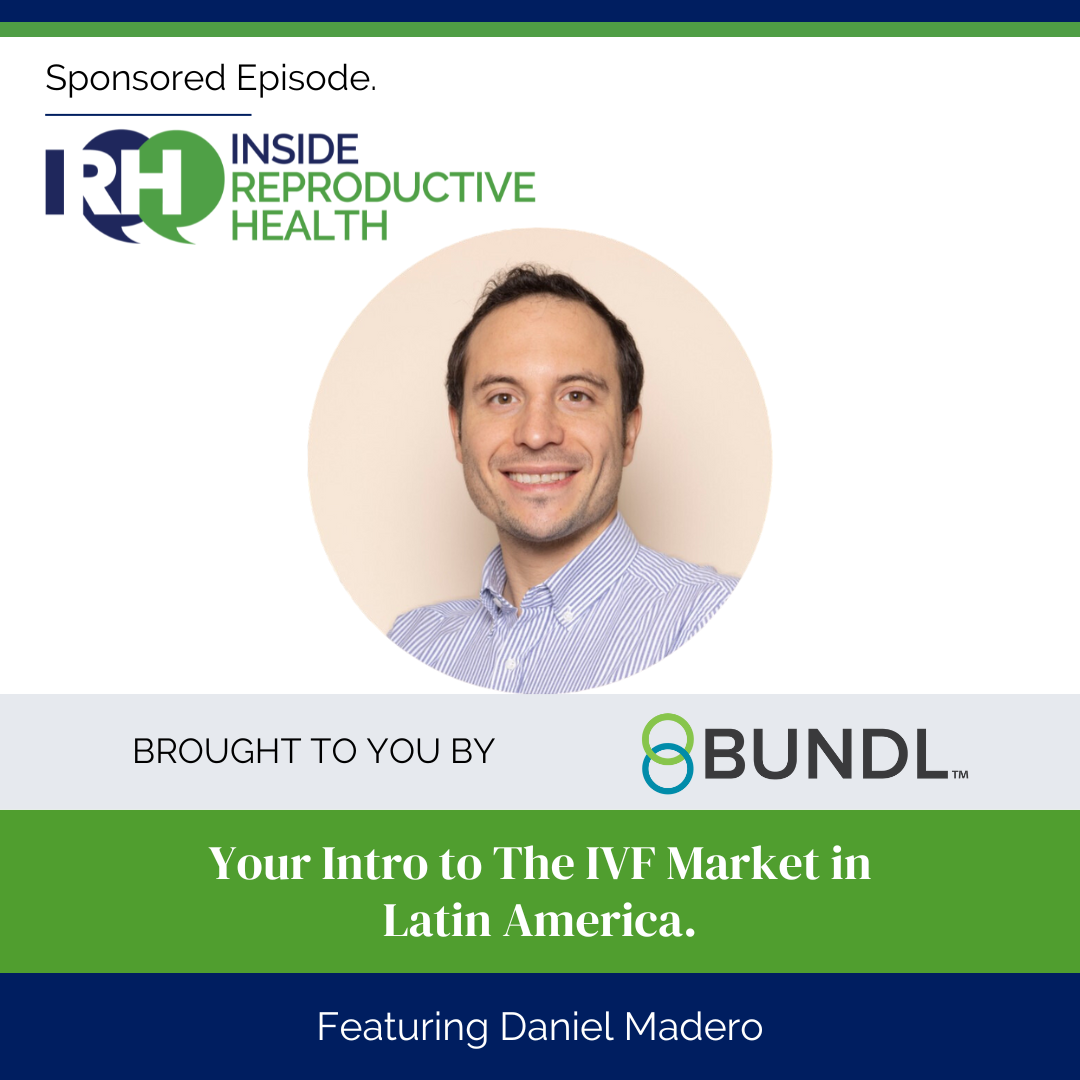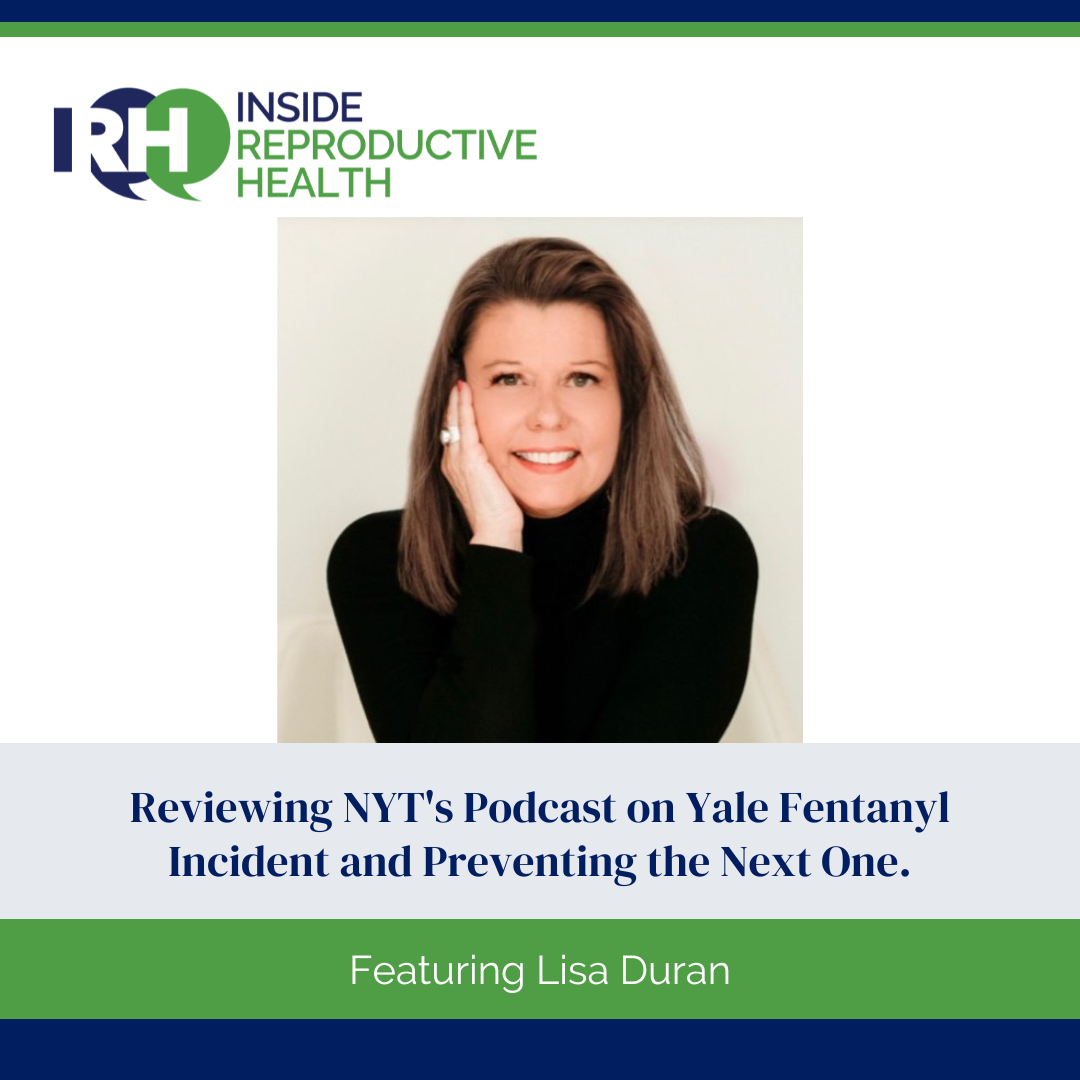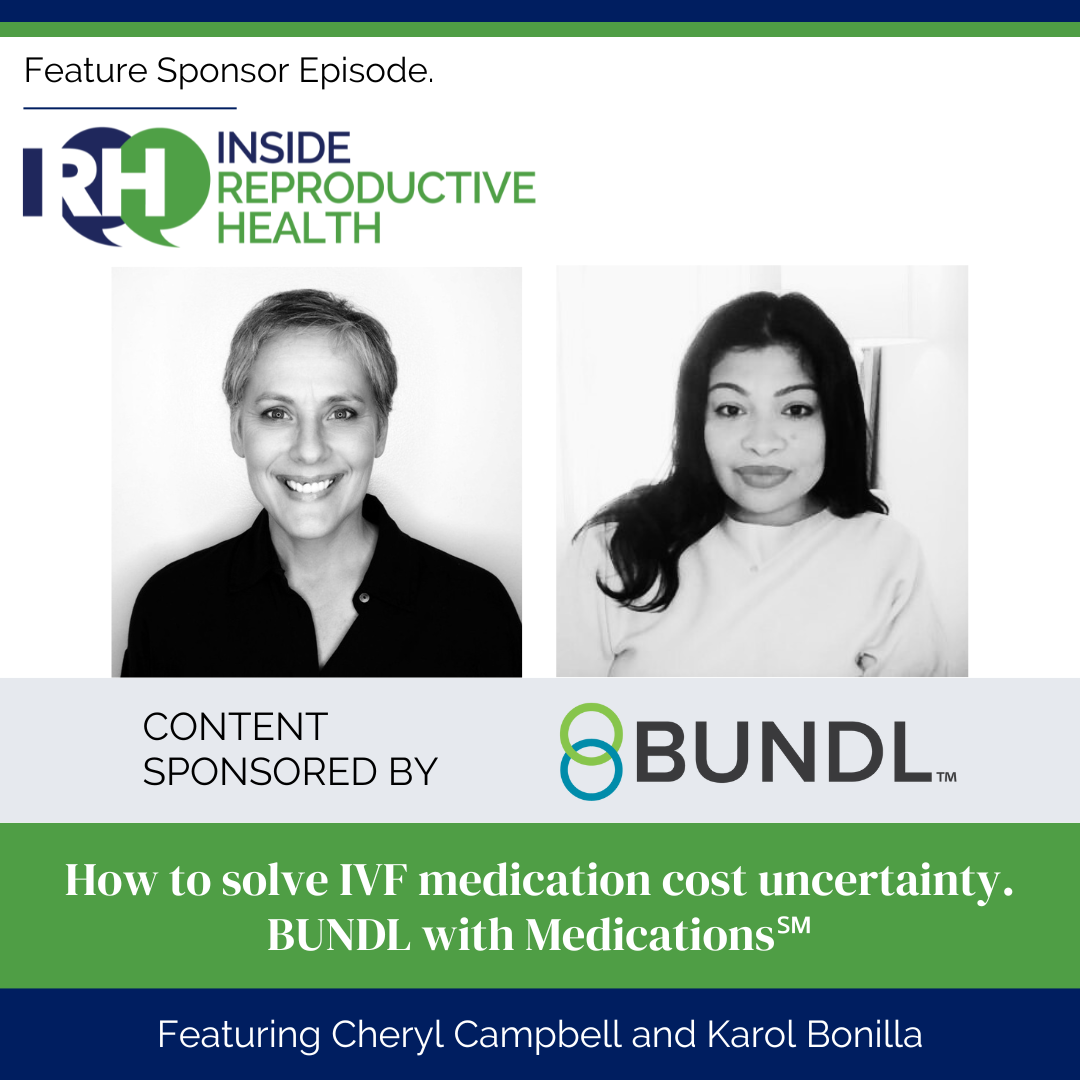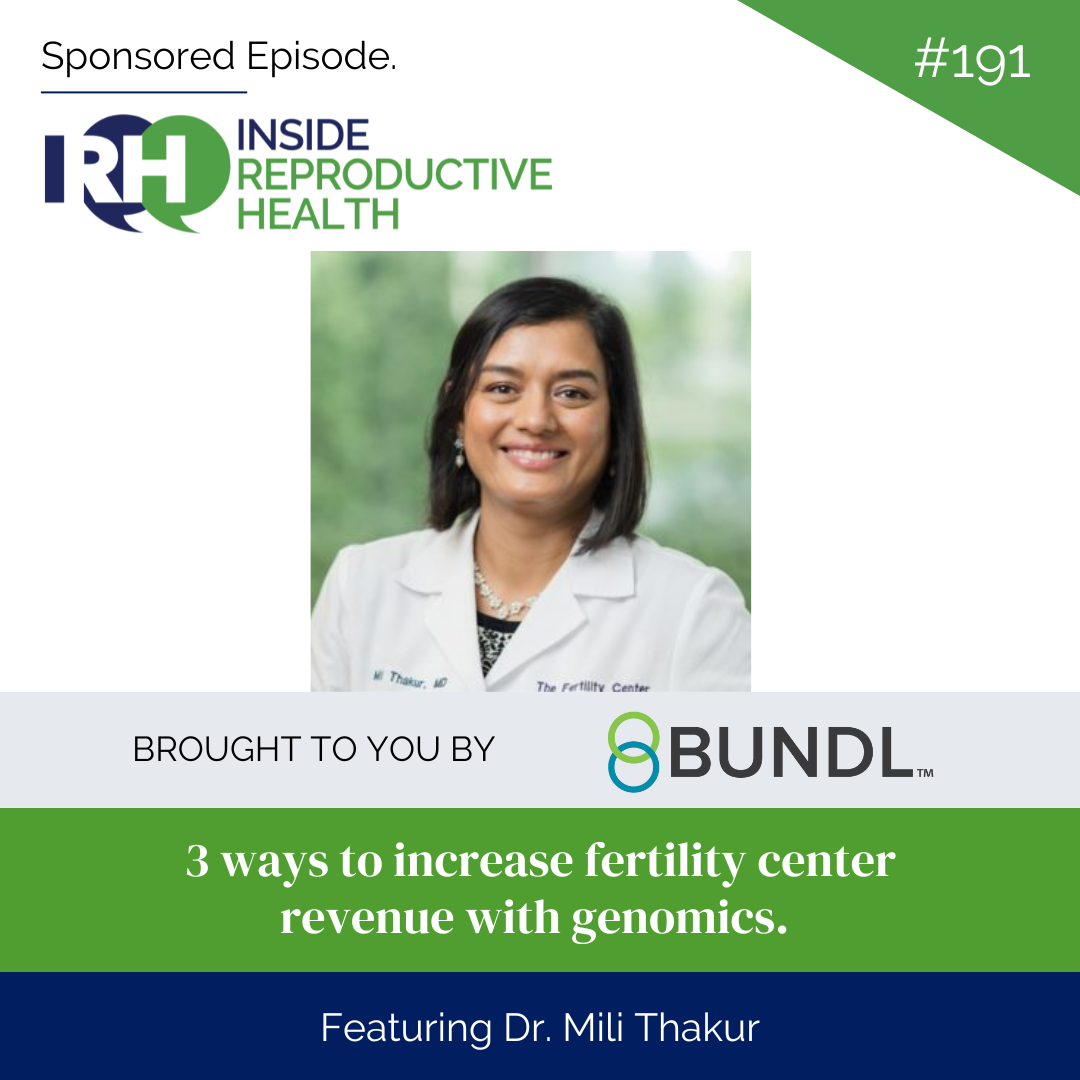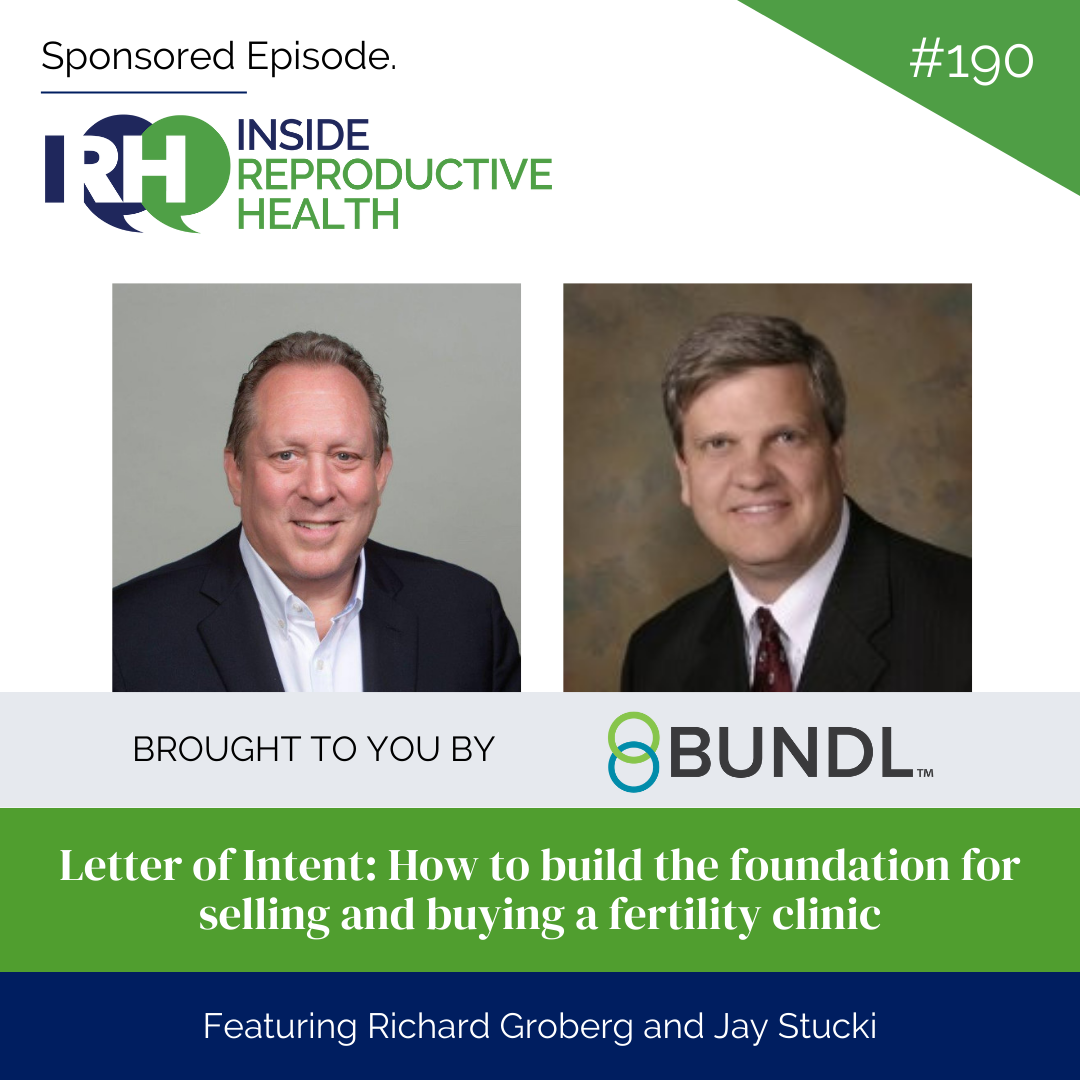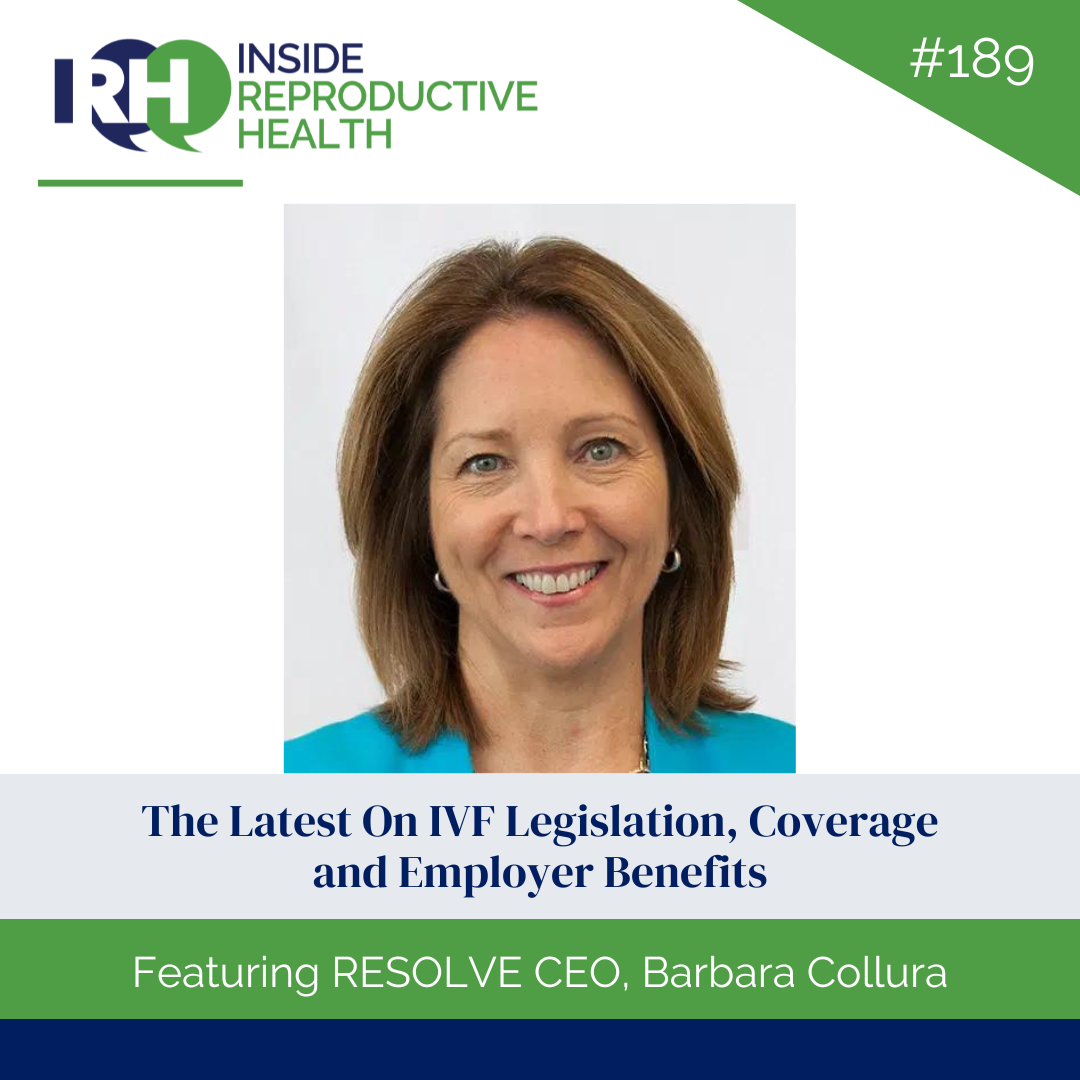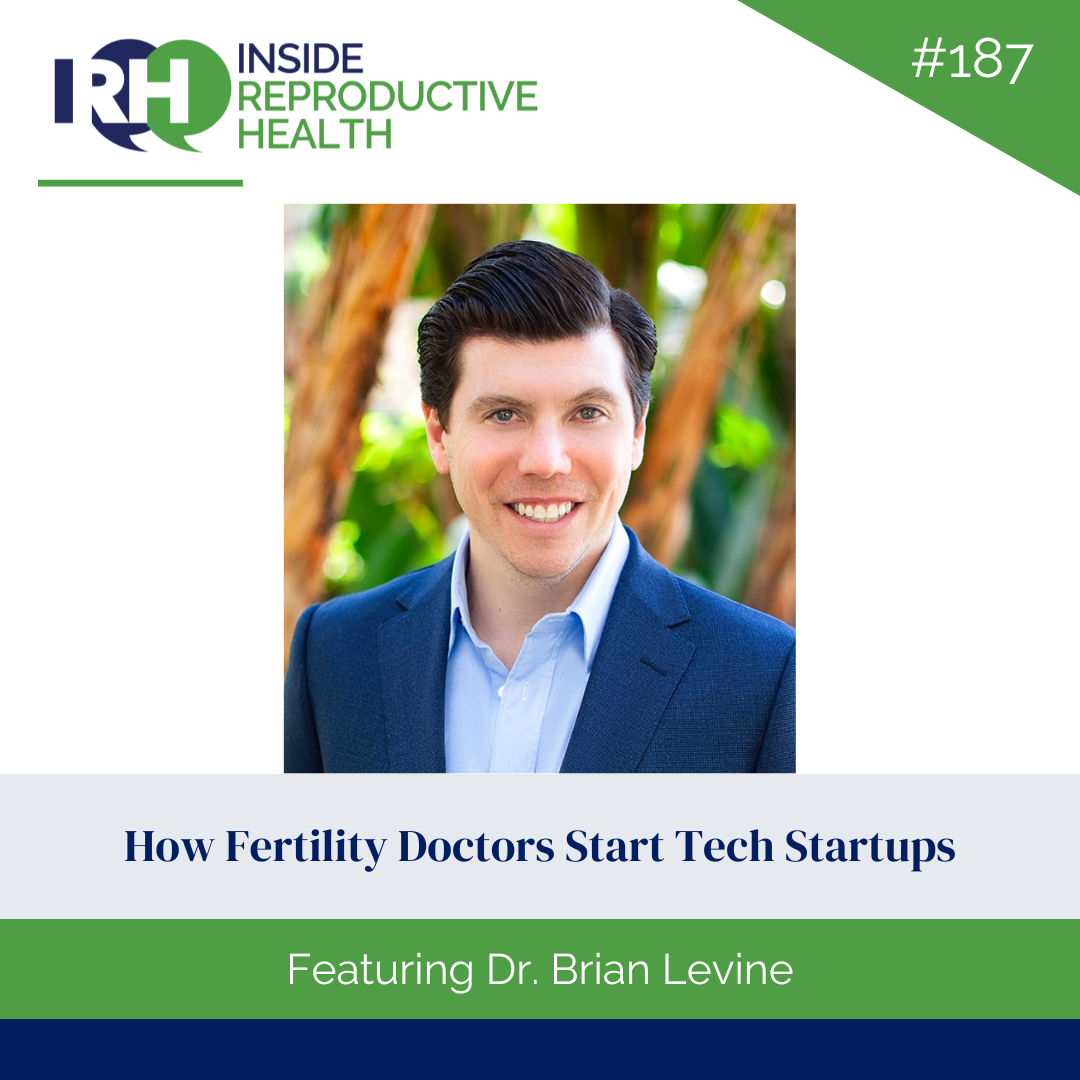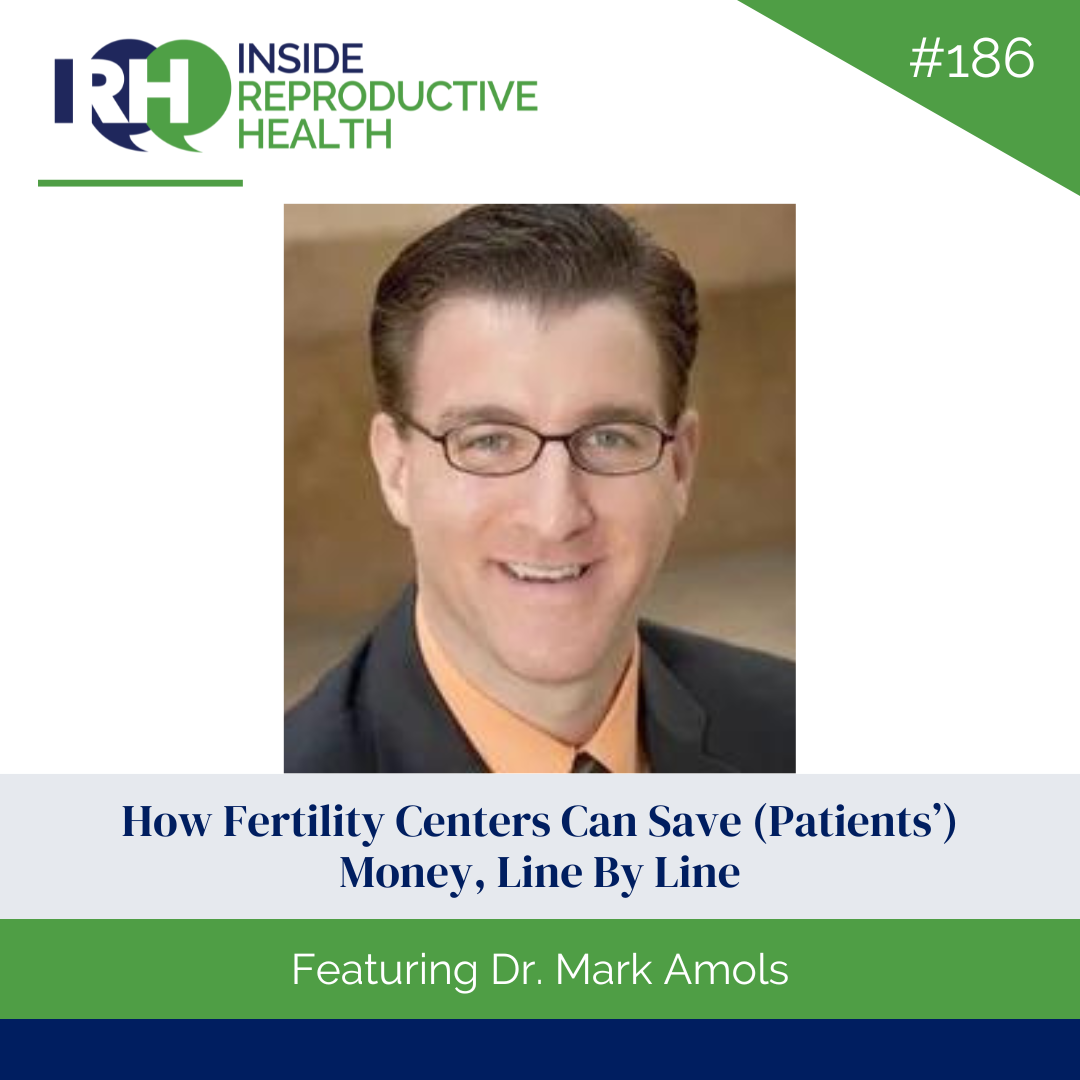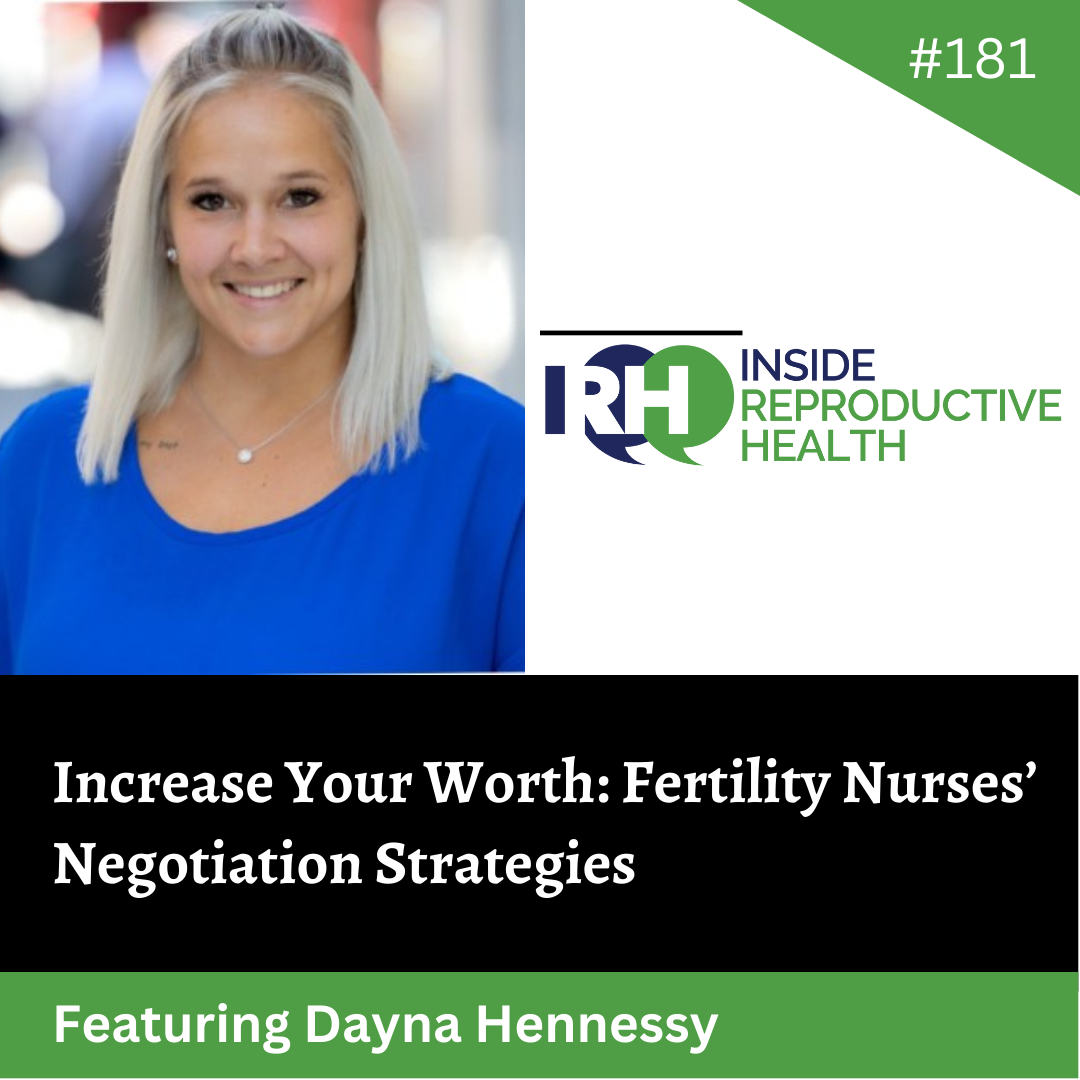DISCLAIMER: Today’s Advertiser helped make the production and delivery of this episode possible, for free, to you! But the themes expressed by the guests do not necessarily reflect the views of Inside Reproductive Health, nor of the Advertiser. The Advertiser does not have editorial control over the content of this episode, and the guest’s appearance is not an endorsement of the Advertiser.
In this week’s episode of Inside Reproductive Health we dissect the successful rapid expansion of Kindbody with their Chief Medical Officer, and 25 year Stanford Professor, Dr. Lynn Westphal.
Dr. Westphal discusses:
How her role of CMO was constructed (As well as her part in designing it)
Her process of establishing protocols (And her process for amending them)
Where she believes, as CMO, it’s important to have input (Why staffing ratios are high on the list)
Her take on the difference between clinical and business operations (And if/where they overlap)
The major differences between REI business plans (academic institution vs venture backed enterprise)
One crucial thing she’s used to support her medical team (And why its effectiveness surprised her)
Dr. Lynn Westphal
Kindbody.com
LinkedIn
Instagram
Transcript
Dr. Lynn Westphal 00:00
I think it's really important if you're looking at next steps or thinking about other opportunities to, to talk to people who have lived on that. And it's really important to find good mentors to find someone who can help guide them in that process.
Sponsor 00:21
This episode was brought to you by The World Egg and Sperm Bank. Today's advertiser helped make the production and delivery of this episode possible for free to you. But the themes expressed by the guests do not necessarily reflect the views of inside reproductive health, nor of the advertiser, the advertiser does not have editorial control over the content of this episode. And the guest appearance is not an endorsement of the advertiser.
Griffin Jones 00:52
One REI, you blink you open your eyes again, four and a half years later, you have 32 RBIs. Who knows maybe they'll have even more than that by the time this episode comes out, I'm talking about Kindbody and more specifically, I'm talking about their chief medical officer, Dr. Lynn Westphal. You may know Dr. Westphal from her time at Stanford she was there for 25 years and there's no way that an established academic REI center runs the same as a very fast moving venture backed enterprise that might IPO in the next couple of years. Rest assured I asked her about the differences of going from one to the other and I asked her about this chief medical officer role was constructed and how she constructed it chief medical officer is a role that some of you who are listening now do not currently play and you will play and even if you choose not to go that route a great many of you will be asked to so I interviewed Dr. Neil Shah of Maven clinic in a separate episode, I interviewed Dr. Lynn Westphal, of Kindbody here and now because I want you to have some insights for what these roles can look like. Dr. Westphal talks about her earlier responsibilities, helping to design clinics training and recruiting establishing medical protocols. I asked her how she got out of each of those seeds. As the organization expanded, she talks about how she organizes protocols and her process for mending them over time. Dr. Westphal talks about how the Chief Medical Officer interfaces with Cambodia's Medical Advisory Council she talks about decisions that are implemented broadly but sometimes require exception like telehealth for new patient visits, you know that I don't believe in a perfect distinction between clinical operations and business operations. And I load that question that Dr. Westphal with that presupposition in place asking her to point the parts of the Venn diagram where clinical ops and business ops really overlap. And where it's really important that she is chief medical officer has an opinion and an input her answer there is about staffing ratios. And she talks about why I asked her if the speed at which decisions come at her to make have sped up or slowed down is Kindbody gets larger. And finally I asked Dr. Westphal to think of something on the spot that she's used to support her medical team that's effectiveness surprised her so she talks about the different ways that she connects different team members and different leadership roles. The rest is for you to enjoy on my conversation with Dr. Lynn Westphal. Dr. Westphal, Lynn, welcome to the Inside Reproductive Health podcast.
Dr. Lynn Westphal 03:09
Thank you so much for inviting me, I'm happy to be here,
Griffin Jones 03:12
You are a well known figure and you're a popular figure you were known before you went to work for Kindbody, you have since joined Kindbody as their Chief Medical Officer. And that's the role that I'd like to deconstruct a little bit today both your particular role, but also how that works. As a chief medical officer, I've had the privilege recently of also interviewing Dr. Neil Shah of Maven Clinic, and I'm not sure which episode will air first but this gives the audience a bit of a career path tutorial of how they might construct a similar role or how they might follow in a similar role, how they might take some pieces from it, and be useful to them. But let's maybe just start with your own career path. How did you come into this role of chief medical officer for such a very large company?
Dr. Lynn Westphal 04:06
When I started, it was not a very large company at all. And my transition to Kindbody was kind of an interesting move. I loved my academic career, but wanted to work on improving access to care. And also, you know, wanted to learn more on the business side and to help build like a new a new company. I had always been a big institutions. And so being in the Bay Area, where there are all these startups, you know, I always thought it would be interesting to see something developed from the ground up. When I started at Kindbody in early 2019. We had half a clinic at the time, and I was the first reproductive endocrinologist currently we Have 32 reflective endocrinologists and are adding a few more. So it's grown very, very rapidly. As the first chief medical officer, at our brand new company, there wasn't, you know, like a specific role to follow. And so, you know, I had to kind of create what I was doing. And that has changed a lot over the time. So early on, I was involved in many, and almost all aspects of the company from, you know, helping design the clinics and going and getting the clinic setup and doing all the training in the clinics and recruiting and developing all the initial medical protocols. You know, getting all of the labs up and running worked very, very closely with the embryology teams. And, and then over time, as we grew, my work has had to shift right, because now I think we have close to 1000 people, and, you know, can't do everything that I wasn't in the very beginning. But it was really fun, being able to create a different model for health care. And I love that both of my daughters go to Kindbody for their, for their general GYN care and all their friends. So that's been really rewarding to see, you know, even my family wanting to come to Kindbody. And then and then seeing that increase in access to care has been, has been incredible, especially with the Walmart, being the health benefit for them and, and really having health care benefits for people who never ever thought that they would be able to do fertility treatments. That's been really incredible. A lot has happened in these four and a half years. Did I did I hear you correctly that you were the first REI? Did you say you're the first or the third. You were the first? I was the first REI at Kindbody? Yes.
Griffin Jones 07:12
And now there's 32.
Dr. Lynn Westphal 07:14
Correct.
Griffin Jones 07:15
Okay, so you're you're laying the groundwork for a lot of people that come after you, presumably that are now your colleagues when you started in 2019? Were you the chief? Was your title originally, chief medical officer? Or was it something else that grew into that see, title?
Dr. Lynn Westphal 07:37
I was the chief medical officer from the very beginning.
Griffin Jones 07:41
What did you think that your role was going to be in terms of being mapping out of okay, in a couple of years time, I'm going to have dozens of colleagues, and I'm responsible for laying this framework for them. What did you see your task was at a time when when you were the chief medical officer with one Doc, you being that one, Doc?
Dr. Lynn Westphal 08:04
Well, the first things I needed to do was hire other doctors. Right? Because those are the people that we need, you know, to have our clinics. So that was, yeah, one of the critical tests early on was was recruiting other people to join con con body and finding people who believed in the mission, and we're as passionate about creating this new way of delivering care. And we're as passionate as I was.
Griffin Jones 08:39
How did you make that case to them? So if I'm the if I'm Gina, if I'm an executive or a big investor came about and thinking, Okay, well, let's get Lynn because she's got some credentials, and we'll we'll get have her to help us with the recruiting of the docks and building this Rei base. But you've got to paint some sort of vision for people to come over and and show them okay, this these aren't just investors in business people they are soliciting My advice for how we're going to approach are our medical framework, and I'm the one that's in the leadership position for that right now. So even if you could paint a corporate vision of access to care and, and having a better aesthetic and expanding demographics in generations, there's that corporate vision, but then it still has to be brought down to something more tangible that Rei is could say, Okay, I'm gonna go work for this person. What was that vision that you painted?
Dr. Lynn Westphal 09:42
So early on, I think people did have to take a big leap of faith. I mean, obviously, I had to get started. But, you know, the healthcare space tends to not change very rapidly. And people have done things the way that they always have done and, and it takes a long time to change anything. So being in a new company where we were creating everything from the ground up, it gave everyone a chance to be involved in that, which is, you know, it's really exciting to be able to look at a clinic and say, you know, I'm going to be building this, and we're going to have this culture where we're, you know, going to make it easy, and very comfortable for patients to come in. And, and then there was the opportunity to really promote leadership in the people who are coming into the company, that was a big passion of mine. I loved being a fellowship director. And then after fellowship, I found that a lot of my fellows, you know, they still would call and text me. And I think there just are not people who are promoting or supporting people when they first wanted to practice, right, so there are different models and practices that people join. But, you know, I think a lot of people just, you know, jump into a practice and don't always have the support that they would like, or they need, and maybe don't see that they have the opportunities to grow, and be in a leadership position. Because we had so many places where we needed help, you know, so, you know, someone could be over the third party program, and someone could be over, you know, the PGT. And write that in there, just like so many places where, where we just needed people who could lead. And I really wanted people to think about what they were passionate about. And if there was a program that they wanted to develop 100% would want them to do that. So I saw my position as being able to maybe open doors and promote people in leadership positions.
Griffin Jones 12:24
You have these people coming in that you're helping to get to leadership positions, you're aligning them with their interests and their fields of study. What thesis did you have them entering into? Was it? Did you have a general thesis for them of this is how we're going to build this structure. And here's how someone that is interested in third party can contribute, or here's how someone that's interested in PGT can contribute? Did you have some guiding principles or systems in place when they joined? And if so, what were they?
Dr. Lynn Westphal 13:03
Well, so early on, right, the focus had to be to build up the actual clinics, and, you know, would promote them. So, you know, early on, we would focus on a lot of the marketing, you know, building the clinics, because you need to have the patients before you can build some of these other other programs. And so it was, you know, talking to them about things that we would need to do in the future as we get larger, you know, so for the very first clinic in New York, you know, we had our, you know, we were the people there were helping decide, like, you know, what PGT company we were going to use, and then, you know, eventually now we have our LM time labs. So there's just been this big transition early on with a small number of clinics, there wasn't quite the scale to have some of these bigger positions. But now that we have clinics all around the country, with that scale, there are so many leadership positions, because we have so many different areas that that need someone you know, to be the advocate for that program.
Griffin Jones 14:24
Do you then see yourself as an arbiter at times? Yeah, if you have so many people that you can draw from with different areas of expertise, maybe this person's got really strong expertise and PGD. And this person's really got a really strong expertise in recurring pregnancy loss, et cetera. And and even if you break them into different roles, where they have influence over those domains there, those domains overlap. You have you have protocols that maybe you want to access as a company. Are you an arbiter in some way? Are you a referee and if so, how does that process to work,
Dr. Lynn Westphal 15:01
I'm really fortunate we have, you know, just an incredibly talented team. And when people come on, right, many of them will have an interest in a certain thing. And so, you know, if there's someone to, let's say, uncle fertility, and there are a number of people in the company who, you know, have experienced in that, but you know, had one person who was very passionate about that. So, you know, she's kind of leading that developed slide decks that we can use, you know, for the new patients. So she is the head of that, but then we have other people on that team, who are very experienced and have, you know, probably been doing it much longer than she has, but, you know, because she was so passionate and kind of took that on. So in these different areas, that there's usually been one person who has raised their hand and said, You know, I really want to do this, and then we find other people to kind of join a team. So it hasn't really been been an issue. And I think just the way that the culture has developed, you know, everyone just really tries to support other things that people are doing, and that people who are involved in, right, different different programs. So some people have multiple interests, and so maybe helping with this program and another program, but then you have kind of the the point person for a specific program.
Griffin Jones 16:34
Is there a source of truth for all of the programs? Like is there some kind of anthology? How do you organize it all of it? Here's, here's the different data sources that we pull from, in these different areas. Here's the our own rounding that we've done before, here's the points of view that we've written on before. Here's some of the abstracts that are different folks have worked on how do you organize all of that?
Dr. Lynn Westphal 17:03
So you mean, how do I organize these different programs are just organize? Just overall the medical piece,
Griffin Jones 17:11
like organizing all of the the literature and study that's been done in in different areas? Do you? Do you leave that to each person? Is there any kind of like central repository of where everybody is kind of contributing? And here's, here's all the abstracts that we've covered on this, here's all of the rounds that we've debated on these particular topics, is there any kind of like, I guess, I'm envisioning some kind of, you know, Kindbody library where all of this lives, I'll be at virtually, but that that makes it more easily accessible, so that you're not constantly having the same debates or that you're able to move things along. Because you're you're, you're revisiting previous conversations, and previous studies and previous decisions. So that, you know, it's not it's like, when you're in a meeting, and you're like, why didn't we already vote on that, who's got the meeting, who's got the minutes from the last meeting? Like, I'm just wondering if there's any kind of repository where all that kind of information lives.
Dr. Lynn Westphal 18:20
Early on, I developed just for the medical piece, like all the standard protocols, and you know, what to order in different situations. And then, you know, as we acquired other practices, and, you know, really expanded that in the last year and a half or so, we actually have what we call our kind ways. So there's a whole section, a drive where you can, you know, there's a protocol about, you know, x and, and then it has, you know, in that protocol documents that were used to develop that protocol. And, and we have someone who is frequently reviewing all the protocols to make sure that, that they're up to date, you know, in terms of the guidelines, you know, even things like, right, antibiotics for different infections, right, the the guidelines may change, so, so we'll have in the protocol, you know, where the guidelines came from, and we update them, you know, as as we need to. So we do, we're constantly revising our protocols, and we do have a place where, you know, if someone isn't sure, oh, how do I treat this? Or how do I do that? We have a document and it and it has, you know, all of the studies that were used to come up with that, and we're, you know, and then sometimes there are things that are a little bit less straightforward or something So we'll have these protocols and then, you know, there'll be some new study, and we'll have to revisit. And then if we're having a lot of debate, we actually have a medical advisory council. And so often those issues will come to that group. And we'll discuss it there and then hopefully come to some agreement and then present that to the whole group.
Sponsor 20:26
Did you know your practice and patients are vulnerable to using eggs from victims of human trafficking? Countless young women from developing countries have been coerced and deceived while being moved across borders and trafficking operations. Without proper safeguards, fertility clinics, like yours may unknowingly be selling the eggs of these trafficked victims, exposing your patients and your clinic to legal complications. There are precautions you can take to minimize your risk. The World Egg and Sperm Bank has created a free due diligence checklist that you can download now to ensure that your clinic only sells eggs from donors who have been safely and ethically protected. This comprehensive checklist will help you determine the source procurement process and traceability of biological materials while also creating higher quality best practices for your patients in egg and sperm selection. Protect your patients and your practice by heading to www.theworldeggandspermbank.com/protect. Again, that's theworldeggandspermbank.com/protect.
Griffin Jones 21:35
So, you wrote the protocols in the beginning you set all those standard protocols and and then that was an before you hired all the other Doc's.
Dr. Lynn Westphal 21:46
So I had a basic protocol book, that, you know, went through the basics of what you do, and you know, these different situations. So you know, I focused on all the fertility, there is a separate one, because we do some gynecology, too. But I wrote, like a basic just so you know, people knew what to order in different situations, and, you know, went through different IVF protocols, just so that across the different clinics also, like for the nursing, they knew that if someone was going to do this type of protocol, this is, you know, how that was done, and how to order the medications. So all of these things do do relate. And then now we have much more extensive protocols that, you know, go into more detail with, you know, the references for, you know, for why we've made these decisions. And, you know, so for things like, you know, endometrial biopsies era is right, the data on that has changed over time. So we've in our protocols kind of changed. And we put in there, the studies that that we think are most relevant and kind of our recommendations.
Griffin Jones 23:05
Tell me more about how you included other doctors in there or chose certain protocols. As that process evolved. The beyond just it got bigger. That's one thing that happened, more references were added. But in a different podcast episode, I had Dr. Murdia, the CEO of Indira IVF, which is a network in India that they've got 250, fertility Doc's, he says, I've got one set of protocols, I've got one protocol for every situation. And the way I get them into implement is that I hire Doc's that are younger than me, and I teach them this is the way we do it. And of course, he talks about his mechanisms for feedback and how he adapts it. But I know that that that's not Kindbody's trajectory, didn't just start a big network and then hire a bunch of Doc's that were younger than you and then and then have them come in to that. And this, these are the first protocols that they're practicing. That wasn't how it happened with Kindbody. So as you're growing from one Rei to 32, you start off with, you know what, template might not be the right word, but you have a starter with your protocol book, and it gets bigger, but how else did that process work, as you start to bring on Doc's that have a lot of experience and, and might be doing things fairly differently in different parts of the country.
Dr. Lynn Westphal 24:29
We did put together a group to review all the protocols. And, you know, obviously, there are many modifications that that people will do. So we have, you know, kind of the basics if you're going to do this type of protocol. You know, this is how you do that. If you're going to do this type of protocol, you know, the sleeves, you know, this is how you do that. But then there are always tweaks. So we do I realized, it'd be nice if everyone did everything exactly the same. But you know, the person who's in the room talking to the patient, and you know, in the US, there are people who go around to different clinics, and they've tried this, and they've tried that. And, you know, they sometimes come in with a very specific idea of, you know, what they want to try, or they say, Well, I've done, I did this protocol, at this other center. And this worked better than that protocol. So they're always going to be these individual variations. But I think in general, for, you know, there isn't an average patient, but for, you know, kind of a patient who hasn't done a lot of treatment in the past, you know, I think most people will do one or two protocols routinely. So I think the standard is, you know, pretty consistent. And then they're, you know, some of these outliers, people have done many treatments, other places. And so, you know, we're trying to work with them and tweak things. And I think, you know, the patients do appreciate that we really do try to work with them, Listen, you know, to what has worked and what hasn't worked in the past. And it really is a collaboration with the patient.
Griffin Jones 26:20
And with regard to collaborating with the doctors, how does your role interface with the Medical Advisory Council that you were talking about?
Dr. Lynn Westphal 26:30
So I made that meeting? And, you know, we all add things to agenda to the agenda. And, you know, I tried to listen to all the views, and hopefully, at the end, we can come to an agreement on what makes the most sense, you know, for all of our doctors around the country, because we're also right, we're practicing in different states, there are a lot of different considerations. Some clinics are, you know, much smaller than others. So, every clinic functions a little bit differently. So I have that perspective, since I, you know, tried to visit most the clinics. And, you know, hopefully that that perspective, can come to an agreement that works for clinics, and whether they're small or large.
Griffin Jones 27:23
Do you find yourself giving assignments to the Medical Advisory Council, like we want to you that some new literature has come out in this area, and we want to update this protocol? I want to put someone on the Advisory Council for it, do you find yourself doing any of that? Are people coming to you and saying, I think that we should revisit this or we should maybe consider a different protocol in this situation? How much of it is is? Is you doing some tasking versus things being brought to you?
Dr. Lynn Westphal 28:01
It really depends. I mean, there are, you know, issues that will come up and they'll either ask, you know, can we have someone kind of be discussed at the Advisory Council, if there's something that I know someone has a special expertise and, and that is just come up, then I'll ask them, you know, to give us advice. So we also have, which is really nice, a Slack channel just for the Irie eyes. So like if things are coming up, you know, in real time, or someone has a patient with something unusual, you know, then they can put in the Slack channel, and they can get a lot of ideas from people. And then sometimes if we see that there's certain issues that are coming up a lot, then you know, that may be something that we discuss it our advisory council.
Griffin Jones 28:54
You were at Stanford for 25 years. That's a, that's a better part of your career. And it's a very different environment, being in a known established academic center, versus what at the time was a startup, a venture backed startup, looking for national and global scale? And maybe someday IPO and all of the things that come with that two very different environments, what aspects and look, trying to get you to be as specific as possible beyond collegiality and evidence based medicine, but but try to think of the specifics of what are those specifics that you came with that you transferred to your new role in this very different space? And what did you have to dispense with?
Dr. Lynn Westphal 29:46
Well, the biggest change was having to move quickly. At an academic center, you know, any change needed to be discussed and would take a long time to implement. Here, there was a lot of right having to make decisions, and, you know, sometimes make a change, right, within a day or so. So the, the timing of making decisions, like vastly, vastly different. But, you know, practicing evidence based medicine, you know, I think is obviously something that was very important in my academic career, and has translated and, you know, there are a number of people at Kindbody who, you know, have been in academics for a number of years, and I think we practice, everyone really wants to practice evidence based medicine. And so we do try to make sure and we and related to that, like, we will have journal clubs, where we will review articles and discuss them. And sometimes that will be something that we may bring to the advisory council to see is it something that maybe we should change our practice, you know, our field, things are changing so rapidly. And, you know, being at a smaller company, we're able to make those changes more rapidly. Also, you know, able to kind of think about things outside the box a little bit more. And obviously, with the pandemic and COVID and telemedicine, everyone had to switch a lot and how they practice medicine. And, you know, the switch to telehealth has been a big change for for us, too. And so a lot of the changes that I'm seeing also, were just kind of related to allow the changes have just happened in the last few years, too, right. So, you know, when I was in academic medicine, we never did telehealth. And now that's primarily what we what we do. So, to allow these changes, I think we're have happened just as the world has changed too.
Griffin Jones 32:16
Are almost all new patient consults still telehealth?
Dr. Lynn Westphal 32:20
The majority there, there are a few locations where there are patients who are not as comfortable with telehealth. And so they tend to have more patients come in. And you know, and I do see this, you know, I see patients in all 50 states, and there are definitely pockets where people are not as comfortable using telehealth. So, I think depending on the patient population, what I mean overall, most people find it much more convenient. And now people who are in these remote areas where they don't have much of an option, other than, you know, driving along distance, but overall, you know, the majority of our patients, I think, prefer telehealth, at least initially, I think people it's become kind of the norm and I think patients now, almost expect it, right? It's much more convenient, they can do it at home, lying in their bed. You know, it definitely has made access better for a lot of people.
Griffin Jones 33:35
The use of telehealth, is that something that you let each clinic decide or do you decide at at a governance level, generally new patient visits are going to be telehealth. And then you make a couple exceptions for those areas where it's been less receptive.
Dr. Lynn Westphal 33:53
We've tried in general to move to primarily telehealth for for most visits.
Griffin Jones 34:02
Is that Is that like a decision that you make as chief medical officer that that finally said, This is good or this is even better for access to care?
Dr. Lynn Westphal 34:11
It was done as kind of a group operations decision. So wasn't just just my decision.
Griffin Jones 34:21
I want to ask you about where Clinical Operations and Business Operations overlap in your view, because I'm not convinced that these two are totally separable. And I think even in good faith, he could say we let the doctors make decisions, but there's just some decisions that impact other areas of the business and a different interview. I talked with Lisa Duran and we analyzed the New York Times podcast about the incident that happened at Yale there's a very popular podcast that The New York Times has released about an incident with Yale and fentanyl and patients that didn't have didn't have fentanyl, they were getting saline instead, and why We talked about retention and recruitment as a risk mitigation factor. And so there's an example right there where you could say, well, our hiring policy or hiring software is purely a business decision. But if it ultimately resulted in them having fewer nurses than that B, that impacted a clinical outcome. And so that's just one example of where business operations and clinical operations don't perfect. They don't, they're not perfectly separable from each other, there is an overlap in this Venn diagram. And so what is that overlap in your view? And how do you manage it?
Dr. Lynn Westphal 35:39
So clinical decisions, clinical care? I mean, we always make the decision on what is best for the patient. Now, in terms of, you know, workflow, and hiring and who's, you know, in the clinic, and staffing obviously need to work with business development about, you know, kind of what makes the most sense, and, you know, also, you know, discussing, you know, with the staff, like, what hours, you know, do we need to be open, right, so they're all the like, logistics that, you know, in terms of, you know, retention of the clinical staff, right, you don't want to burn them out. And actually, you know, that's one of the things that keeps me up at night a lot is just, you know, worrying about burnout of the staff. And right, it's not just in our field, I mean, burnout is a is a huge problem. And, you know, many reasons for that. So, you know, working with the operations team, we need to make sure that you know, that their expectations of ours and how people are working, aligns with us being able to provide the best clinical care, and a lot of it is, is education. Now, we have some wonderful business people who, you know, understand, you know, how, how complicated the IVF clinics are, but it is something it's very different than almost any other type of care, right? Because you have embryos in the lab. So even if you do your last retrieval today, you're gonna have embryos in the lab for another week. So, you need to think about that type of staff. And so the staffing is is very complicated and, you know, trying to have kind of the right model so that you're efficient, but you're staffed enough so that your your staff are not burning out.
Griffin Jones 37:56
The staffing ratios might be an area of overlap. How do you view staffing ratios right now? Is it is it still as hard as it had been in that in like, 2120 22, for getting doctors in embryologists are in A League of Their Own with regard to recruiting them, but I'm talking nurses, med techs, phlebotomist, front desk people, is it as hard as it was in the peak of the great resignation time that started in 2021? And went through 2022? Is it? Is it harder, just as hard? Is it starting to lighten up? How do you see that?
Dr. Lynn Westphal 38:36
I think it's just as hard I don't see that it has gotten easier to staff, the clinics. You know, partly because, you know, every clinic is looking for talented and trained staff, you know, so if someone isn't happy one place, right? It's often easy to find a position somewhere else. And just, there aren't a lot of nurses who you know, who are trained is because it's a very different field. It takes a long time to train someone so that they're comfortable in the clinic. And also depending on the state, right. And some places do have noncompetes you know, California and they're no noncompetes and so people can move around easily. And I have not seen that, that it's been easier to recruit people.
Griffin Jones 39:36
I want to ask you about how you got out of some of the seats that you started in the beginning. So you mentioned that in 2019, you got to have a clinic, you're the only Rei you're helping with training and recruiting. You are working with the embryology teams, you're involved in designing the clinic and various aspects of the company. Now the organization is around 1000 People are getting there. What seats did you start to pull out of? Or roles, tasks responsibilities? Did you find that you had to pull out of earliest? And how did you get out of them.
Dr. Lynn Westphal 40:12
So, as we, you know, built up different teams. So probably one of the earlier ones that I got out of was involved with the whole enterprise and, you know, talking to employers about benefits. So it was really fun, I didn't enjoy, you know, kind of doing these pitches about benefits. But, you know, we built up a big team. And, you know, one of the physicians is very talented in that. So she's kind of stayed on that, but so I haven't had much involvement in that piece for for a while. And, you know, it just got very complex, that whole side. And then, and then as we had more labs, right, the compliance side, we had to build that up and have much, you know, have more people involved in that piece. So I'm involved, some in the compliance, but we have, right like a whole team, and they come in and set up the procedure rooms. And you know, make sure that the embryology labs and all of that are, are set up. So those are probably two pieces just because we have such robust teams. And then I guess, also, on the HR side, you know, we have actually a team that just handles all the recruiting and interviewing and all of that. So I'm not involved in usually any of the initial, so early on, I, you know, often did some of the initial calls and much of the discussion, and now with a larger HR team, and not so involved in that.
Griffin Jones 42:10
The whether it's employer benefits and talking to employers or the compliance side or HR, what resources did you have to put in place before you could exit those seats, I'm thinking of this now, in my own businesses, I want to exit a few seats, there are things that I need to have in place, because right now, it's been my judgment call. And I need to expand my I need to codify my judgment calls in some way so that other people can make decisions. They don't have to text me for approval for every little thing. Otherwise, I'm not in that seat at you for editing the News Digest. Right now, I'm still the one that's doing most of the editing, I would like to be out of that completely. Within some months time, one of the things that I really have to work on is okay, here's an editorial guide. This is exactly how we sound and how we don't sound I go through our own examples of this is why we chose this story. This is why we chose this editing of this story. I'll go through examples of news outlets that I don't like, I'll show you, here's what we don't do and which one of our attributes that goes against take examples out of the Wall Street Journal and said, Here's examples that do enforce our attributes. And, and then I'll do loom videos to show here. If I'm editing an article, this is why I'm taking this out. This is why I'm striking that this is an adverb, it doesn't follow our editorial voice. And so I make these resources and attempt to to get out of those seats. I do this for all kinds of seats. But this is one where it's just it's very close to me. And right now, my judgment is the one that is the body of governance right now, when you stepped out of talking to employers about about structuring employer benefits, for example, or whether compliance or HR, you had competent people, but you still had something that you needed them to be able to work off of, as opposed to your judgment, otherwise, you're not really out of them. What resources did you put in place?
Dr. Lynn Westphal 44:15
Well, the resources were right, from multiple places and the company, right. So, you know, the CEO, was great at finding great leaders for these different areas. And as those people came in, right, they just kind of took over. So it was and I guess, you know, there are only so many things that can be a focus. And so, you know, just as someone became the senior person in a division, I just, you know, kind of backed, backed out so I was, I think, a little bit different than than what you're doing. I mean, obviously, you need to find the right person. But, you know, I, and those people in those positions, often, you know, we're being mentored or trained by by someone else standing and the company
Griffin Jones 45:21
in some of those cases, because this isn't like the it's not like they're taking over the medical officer seat in which you do have your, your established protocols, you have your medical advisory council, in the other seats, it sounds like you are filling in, in many cases, do you feel that way? Like you you are filling in for other seats? Or did it feel like it was a part of your seat at the time?
Dr. Lynn Westphal 45:46
Well, early on, right, there were very few people at the company. So everyone was doing kind of everything. And, and, you know, it was interesting, I learned a lot being involved in all those different aspects. But, you know, then, as we grew, and there were people to take over those different divisions, then, you know, kind of back away from some of those roles and focus more on the specific medical aspects
Griffin Jones 46:21
you talked about as you came from Stanford, one of the things that you got used to was the speed of decision making very different in an academic setting, versus being in a in a venture capital backed enterprise. Now, that kind body is bigger, you're not quite a startup anymore, there's there's been at least a couple years of maturity and development. And it's at a much bigger scale, is that speed of decision making the decisions thrown at you that you have to make quickly? Has that sped up or slowed down?
Dr. Lynn Westphal 46:55
As we've gotten bigger, I think the speed has slowed down some, because, but there are more people who are involved in the decisions early on. Right, it was me and sometimes maybe one other person making some of these decisions, but now, you know, we, we need to get input and, you know, a decision in one area, we have to look at the impact on some of the other areas. So, you know, it's, it has slowed some of the decisions down
Griffin Jones 47:35
the manageable pace, perhaps finally, maybe you can breathe for for half a second, how does the Chief Medical Officer role interface with medical directors, in other words, when does the Chief Medical Officer role and in the medical director role begin.
Dr. Lynn Westphal 47:54
So the medical directors at each site are the ones you know, who deal with their specific workflows, you know, any issues that come up day to day, you know, kind of managing the staff there, if there's something that that they need help with, or, you know, something that is a bigger issue than that, then that will come up to me, but the medical directors, you know, do all the day to day management. And, you know, if there's something happening, they'll they'll reach out to me that they, you know, if they think there's something that I need to be involved with, or if there's something that I can do to help, and then I'll get involved, but I, you know, the medical directors are, you know, a very talented group, and, you know, and I want them also to, to be able to grow as leaders, right? So, you know, if I'm micromanaging everything in every clinic, right, they're not really going to grow as leaders. And that's really important to me, I want these people to feel like they're, they're developing these skills. And related to that we actually have a director of, of leadership or of learning and development and she has leadership courses. So we want all of our areas to do a leadership course, shall so we'll do like some individual coaching to help people build skills that they need for their particular setting.
Griffin Jones 49:42
What's the biggest thing to the extent that you can talk about it that you're working on that you really need feel want to get done in the next six months?
Dr. Lynn Westphal 49:54
There are so many things that that I would I'd love to see. I mean, I mean, in the next six months, we're opening more clinics, right? So that I mean, that's always a big, a big lift to get new clinics open, we get the staff trained, get everyone comfortable, you know, know all the protocols, the I don't know, if there's one specific thing, I think just trying to get all the clinics so that they feel that they have the support that they're as efficient as they can be. And then hopefully, the medical directors feel like they're able to do what they need to do in their clinics.
Griffin Jones 50:47
Does anything stick out in your head when you say, I want the clinics to have the support that they need? Does anything stick out to you in the last four and a half years that you thought, you know, I didn't realize that people would need this for support, I maybe didn't need it as as a clinician I, but but people seem to need this, or maybe I didn't need it before, but I need it. Now, what's something that sort of surprised you if you can, I'm putting you on the spot. But if you can think of something off the top of your head, that might not be obvious that people need for support, but has been very useful for you in supporting your medical team.
Dr. Lynn Westphal 51:25
So one thing that seems to really help people is to feel like they're making these connections. So I really try to find ways for people to connect different ways. And, and I love it when I hear right there little groups that will have like a little text chain, where they're discussing this or they're discussing that. And, and I don't want anyone to ever feel like they're like they're alone. So everyone knows that they can text me anytime I'm like, always available, I don't want anyone to ever feel like they're in a situation, and they're not sure what to do. And they just don't know who to talk to, I think making sure that everyone feels that they have someone to reach out to or, or know that there's always some available and having these these connections and feeling like they're really part of a team. You know, I think that's been, I think, really important for everyone mentally to feel like they they have someone that they can reach out to right, no one, I think feels comfortable, if they think that they're just isolated and in some location or don't have someone to talk to. So I think making it very clear that there's always someone that they can reach out to and, and helps them.
Griffin Jones 53:06
The floor is yours to conclude with your thoughts. And maybe we think of some of your colleagues that might be a few years behind you but are considering the next step and Chief Medical Officer, whether it's for a network of clinics, or whether it's for a tech company, or somewhere in between, but they're looking at this opportunity to be a chief medical officer, and whatever that might mean for the opportunity. They're assessing it. What maybe we just keep them in mind and and what how would you like to conclude?
Dr. Lynn Westphal 53:43
I think it's really important if you're looking at next steps or thinking about other opportunities to to talk to people who have lived on that. And it's really important to find good mentors. There are a lot of people who I think struggled because they just never found someone who could support them or haven't found the right support system. And and, you know, I have seen the difference it can make in someone's career to have right to have that person who is there to mentor them. And so I think for anyone who in any situation is either trying to move their career forward or think about doing something else to find someone who can help guide them in that process.
Griffin Jones 54:40
Dr. Lynn Westphal Thank you very much for coming on the Inside Reproductive Health podcast.
Dr. Lynn Westphal 54:45
Thank you so much for inviting me.
Sponsor 54:47
Head over to www.theworldeggandspermbank.com/protect and download their free due diligence checklist to ensure that your program only sells eggs from donors that have been safely and ethically protected. That's theworldeggandspermbank.com/protect.

